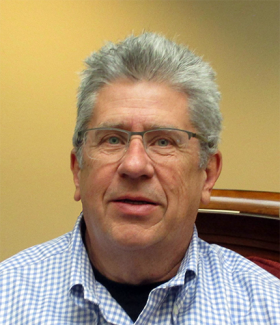I am the Co-chair, along with Hendrik Tolman, of the Unified Forecast System – Steering Committee (UFS-SC), one of the governance bodies in NOAA’s emerging community modeling effort. The overall goal of the UFS activity is to have a unified forecast system that can be configured to meet the many applications in NOAA’s product suite.
The UFS-SC is a review, coordination, and decision-making body, with major milestones and the schedule of the Environmental Modeling Center (EMC) applications a foundational consideration. The UFS-SC approves strategic direction and strategic plans for the UFS and recommends the content and development path of the production suite. More information on the UFS-SC can be found at: https://www.earthsystemcog.org/projects/ufs-sc/.
For many years the forecasts of the National Weather Service (NWS) have been criticized as being of less quality than those of the European Center for Medium-range Weather Forecasts. Much of the public criticism has been based on hurricane track forecasts from the global, medium-range forecast system. In both weather and climate modeling, the Europeans have been better able to organize and focus their activities. As I wrote in the Washington Post in 2013 “To be the best in weather forecasting: Why Europe is beating the U.S.”, our research community is fragmented. We find it difficult to overcome this fragmentation and focus research advances on operational applications.
The forecast mission of the NWS is far more complex than the medium-range, global forecast system. Looking to the future it will require models that couple atmospheric, oceanic, land, chemical, and cryospheric processes. These models will need to operate, for some applications, at cloud-resolving scales. The U.S. modeling research community holds excellence in all of these fields, and leveraging this expertise into operational systems to improve environmental security is a major motivation.
NOAA has taken some important steps to improve its operational modeling. The Strategic Implementation Plan (SIP) has become the foundation of the evolving modeling system. The plan is reviewed and updated on a regular basis. It is central to the Steering Committee’s deliberations, linking the operational requirements to research outside of NWS’s programmatic domain.
The selection of the FV-3 dynamical core and the cubic-sphere grid as a primary algorithm of the atmospheric model was an important scientific and computational step. ( See, “The Weather Service just took a critical first step in creating a new U.S. forecasting model” ) The selection was also an important organizational and managerial step; it facilitates the focus of activities in atmospheric physics on predictive problems in a controlled scientific environment.
Another decision by NOAA has an important strategic benefit. The NOAA Environmental Modeling System (NEMS) is a community-based, software infrastructure that supports multiple applications. For more than a decade, NOAA has participated with other agencies in evolving this infrastructure and integrating model components into a common architecture (“The Earth System Prediction Suite: Toward a Coordinated U.S. Modeling Capability” – BAMS 2016 ). This approach supports community participation in a software environment that advances scientific integrity and robustness. It allows sharing of algorithms and intellectual expertise.
NOAA has also been seeking to formalize a relationship with the National Center for Atmospheric Research (NCAR), which is a recognized leader in community modeling. With these decisions at hand, NOAA has improved its position to develop its world-class suite of predictive products.
The community governance is still evolving. Indeed, it was recognized from the beginning that a rising role of NOAA as a partner in the U.S. community modeling culture could not be defined as a hierarchical management structure. The UFS-SC has its role at the interfaces of NOAA’s operational and research missions and the broader research community. The organizational and cultural changes required to deliver the UFS will take time; there are gaps to fill and barriers to overcome. Never before in my career have the decisions been made and the leadership aligned in such a way to make such advances in modeling possible. This is an exciting time with reasons to be optimistic.
Contributed by Ricky Rood.
Richard B. Rood is a Professor at the University of Michigan. At NASA, he managed modeling, data assimilation, and high-performance computing to provide products for NASA’s observational missions and campaigns. He was detailed to the Office of Science and Technology Policy from 1998 – 2001 to develop strategies for modeling and computing.
